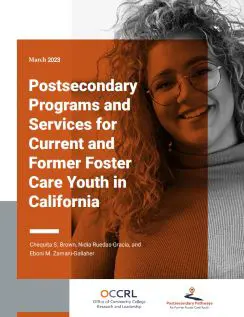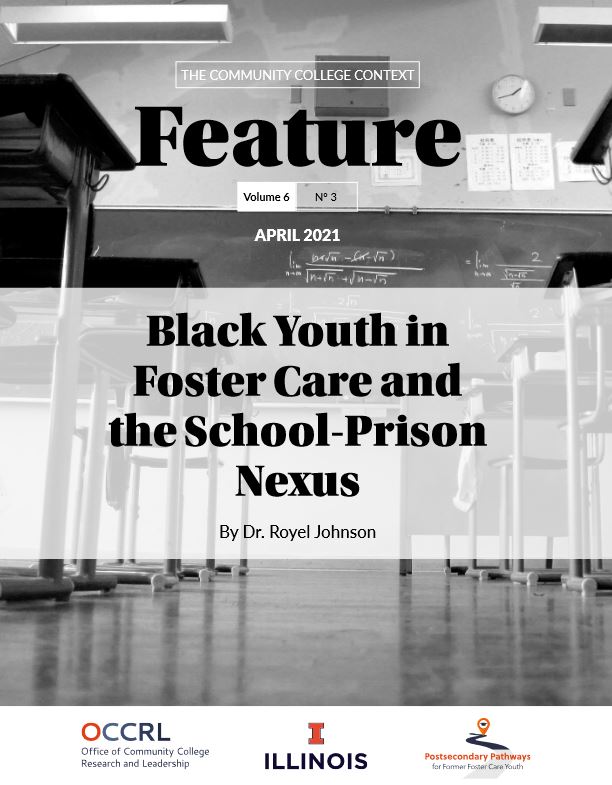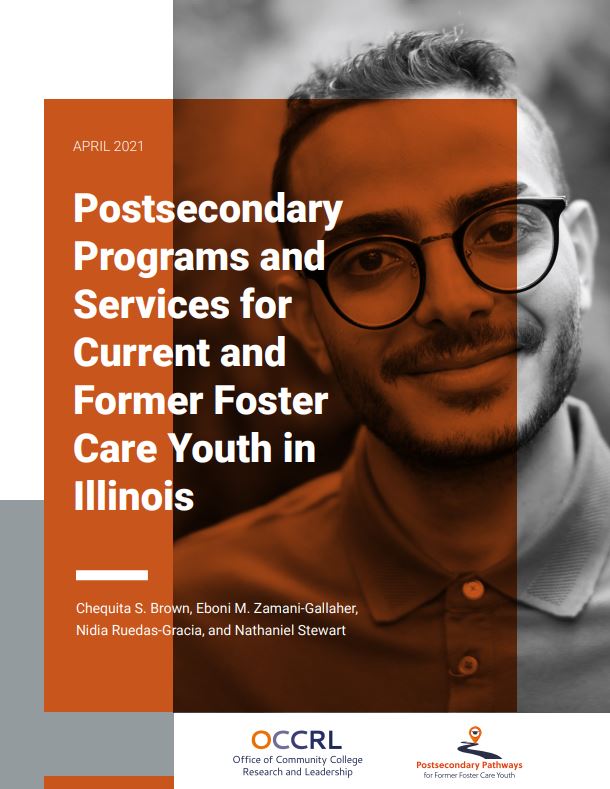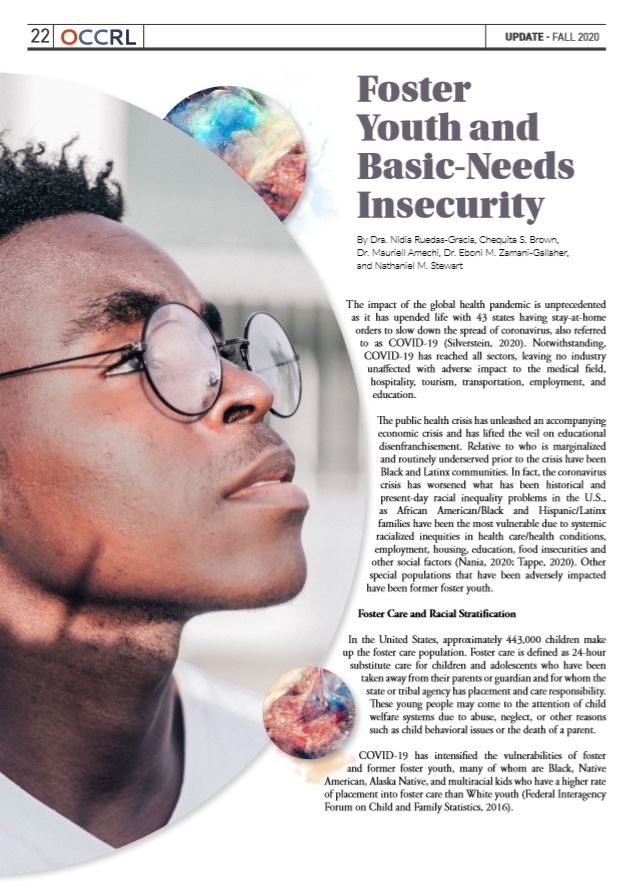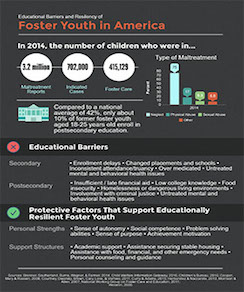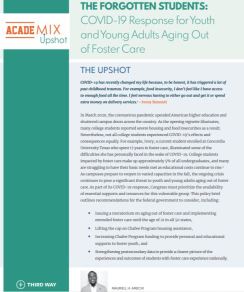
Postsecondary Pathways - for Former Foster Care Youth
This project has been completed and is no longer active.
However, we hope you are able to utilize its resources.
The Postsecondary Pathways for Former Foster Care Youth (PP-FFCY) reflects OCCRL’s commitment to examining and developing postsecondary pathways that support mobility for first-generation, underserved, and minoritized populations, as well as strengthening career pathways to promote seamless transitions from college to careers. This project endeavors to examine postsecondary access, opportunities, and supports for foster youth in Illinois and other states across the county in addressing access and outcomes of FFCY in Career Technical Education (CTE).
Purpose
The Postsecondary Education Pathways for Former Foster Care Youth (PP-FFCY) project is an exploratory study focused on postsecondary pathways for current and former foster youth in Illinois. OCCRL is conducting a comprehensive-needs assessment that provides a descriptive profile of current and former foster youth populations in Illinois; examines postsecondary access, opportunities, and supports for foster youth in Illinois; and addresses disparities in career and technical education (CTE) programs. This project reflects OCCRL’s commitment to examining and developing postsecondary pathways that support mobility for first-generation, underserved, and minoritized populations as well as strengthening and supporting career pathways to promote seamless transitions from college to careers.
Resources
OCCRL aims to increase postsecondary awareness, access, and attainment for current and former foster care youth by providing information on programs and other resources that offer holistic support and services. View the list of postsecondary programs and services.
Strategies to Cultivate a Foster-Friendly Culture on Community College Campuses
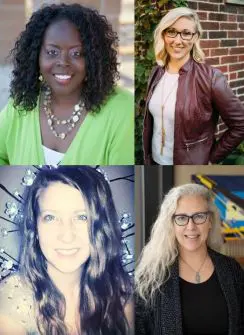 In this episode, Chequita Brown talks with Kate Danielson of the organization Foster Progress, as well as with Anna Wandtke and Tricia Wagner of Rock Valley College in Rockford, Illinois. The group discusses how to cultivate a foster-friendly culture at Illinois community colleges.
In this episode, Chequita Brown talks with Kate Danielson of the organization Foster Progress, as well as with Anna Wandtke and Tricia Wagner of Rock Valley College in Rockford, Illinois. The group discusses how to cultivate a foster-friendly culture at Illinois community colleges.
Navigating College as a Foster Care Alum
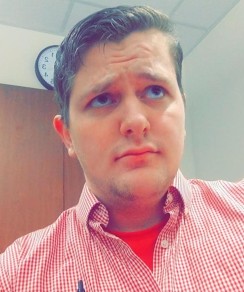 In this episode, OCCRL research assistant Chequita S. Brown talks with Jonathan Stacy, a sophomore at Heartland Community College who is pursuing his studies and a possible career in criminal justice.
In this episode, OCCRL research assistant Chequita S. Brown talks with Jonathan Stacy, a sophomore at Heartland Community College who is pursuing his studies and a possible career in criminal justice.
Listen to the podcast and view the transcript.
Key Elements to Successfully Connecting Foster Care Youth to Educational Resources for Postsecondary Success
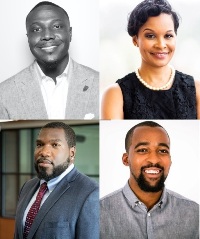 In this episode, Nathaniel Stewart talks with Mauriell Amechi, Regina Gavin Williams, and Blayne Stone Jr. about how the transitions and pathways to postsecondary education are similar and different for Black former foster care students. The scholars also discuss key elements to successfully connect foster care youth to educational resources that help advance the postsecondary education opportunities for this student population.
In this episode, Nathaniel Stewart talks with Mauriell Amechi, Regina Gavin Williams, and Blayne Stone Jr. about how the transitions and pathways to postsecondary education are similar and different for Black former foster care students. The scholars also discuss key elements to successfully connect foster care youth to educational resources that help advance the postsecondary education opportunities for this student population.
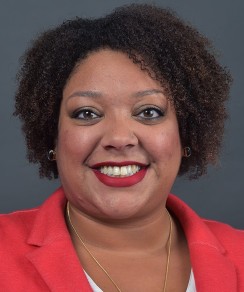
Maddy Day
The Impact of Campus-Based Support Programming on Foster Care Collegians' Postsecondary Access and Retention
In this episode, Chequita Brown of OCCRL talks with Maddy Day about the Fostering Success initiative in Michigan and the impact of campus-based support programming on foster carecollegians' postsecondary access and retention.
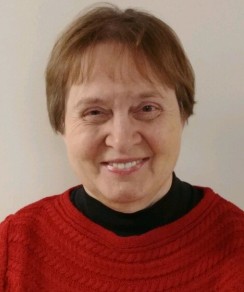
Patricia Palmer
How Youth-in-Care in Illinois Can Access Educational Resources to Pursue a Postsecondary Education
In this episode, OCCRL research assistant Chequita Brown continues the conversation on foster care youth by talking about with Patricia Palmer about accessing available resources in Illinois for youth-in-care who want to pursue a postsecondary education.
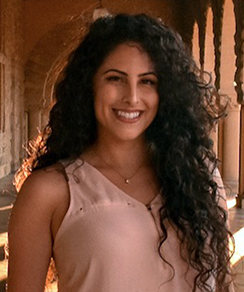
Nidia Ruedas-Gracia
Conceptualizing 'Sense of Belonging' Among Students From Historically Minoritized Racial Groups Within Higher Education
In this episode, Colvin Georges Jr., a research associate at OCCRL, talks with Dr. Nidia Ruedas-Gracia about what it means to have a sense of belonging and discusses her research in this area. They also discuss how a sense of belonging affects college students from historically minoritized racial groups.
Postsecondary Programs and Services for Current and Former Foster Care Youth in California
By Chequita S. Brown, Nidia Ruedas-Gracia, and Eboni M. Zamani-Gallaher
This brief highlights postsecondary programs and services in California that support youth in care, in addition to young adults who are aging out of foster care. Read more.
Tracking College-to-Career Pathways for Foster Youth
By Chequita S. Brown
In this OCCRL Thought Paper, Chequita S. Brown relates how tracking the data of students with foster care experience helps to recognize them as a legitimate student population. She offers recommendations on how to do this and conveys the many obstacles that can hinder the academic and career success of foster youth. Read more.
Black Youth in Foster and the School-Prison Nexus
By Royel Johnson
In this OCCRL Feature Brief, Dr. Royel Johnson argues that the foster care system, and more specifically congregate care facilities, are part and parcel to the enhancement of carceral state power. Read more.
Postsecondary Programs and Services for Current and Former Foster Care Youth in Illinois
By Chequita S. Brown, Eboni Zamani-Gallaher, Nidia Ruedas-Gracia, and Nathaniel M. Stewart
This research brief provides an overview of programs and services that helps strengthen postsecondary pathways for current and former foster youth in Illinois. Read more.
Foster Youth and Basic-Needs Insecurity
By Dra. Nidia Ruedas-Gracia, Chequita S. Brown, Dr. Mauriell Amechi, Dr. Eboni Zamani-Gallaher, and Nathaniel M. Stewart
This article discusses how COVID-19 has intensified the vulnerabilities of foster youth and former foster youth, many of whom are Black, Native American, Alaska Native, and multiracial children who have a higher rate of placement into foster care than White youth (Federal Interagency Forum on Child and Family Statistics, 2016). Read more.
(From the Fall 2020 UPDATE on Research and Leadership)
Exploring Equity in Postsecondary Education
By Heather L. Fox, Eboni M. Zamani-Gallaher
This chapter examines how postsecondary practitioners are encouraged to work collaboratively with child welfare agencies and other community-based organizations to identify and implement culturally responsive supports for former foster youth to promote early academic achievement. Read more.
The Forgotten Students: COVID-19 Response for Youth and Young Adults Aging Out of Foster Care
By Mauriell H. Amechi
This policy brief outlines recommendations for Congress to consider regarding the country's COVID-19 response, in an effort to prioritize the availability of essential supports and resources for youth and young adults who are aging out of foster care. Read more.
What if I Never Read That Passage? Learning and Unlearning About the Community College Sector
When I enrolled in my master’s program for student affairs administration in higher education, I wasn’t sure what to expect. I had not considered pursuing a student affairs career until late in my senior year of college. The legal field was my passion, and I didn’t have much of a desire to leave Pennsylvania, where I had grown up. With a slight understanding of student affairs and a passion to improve students’ college experiences, I packed my bags and moved to Indiana to start my master’s program at Ball State University.
Within the first few weeks of the program, my outlook and knowledge of higher education became incredibly more expansive. I had been introduced to ACPA’s and NASPA’s competencies, learned about the history of student affairs, and engaged in “hands-on” learning through my assistantship with Ball State’s Office of Student Life.
While I was absorbing this new information, one moment particularly stands out to me. I was completing a reading for my course on The American College Student and there was a passage on community college students. I had honestly never before thought of community colleges as a part of higher education or considered how community college students’ needs compared to the needs of other students. I wanted to learn more about these institutions, so I enrolled in a class specifically about them. Deciding to take courses focusing on community colleges has been one of the most impactful pieces to my education as an emerging student affairs professional. But what if I never read that passage?
My Journey
I want to revisit the moment I first engaged with community colleges in my master’s program. For my American College Student class, there was a week in which we focused on mental-health issues students face. While reading Chapter 24 of the text Today’s College Students: A Reader, I came across a passage dedicated to mental-health issues faced by community college students. Community college students commonly have additional stresses in their life compared to students at four-year institutions, such as marriages, children, eldercare, and work. While community college students have these stressors, the authors noted that resources and services available to these students are limited. This was a small passage in a 15-page reading assignment, but it really made me stop and think about what I had been learning about in the realm of student affairs. How could the students with the most needs have the least support?
I thought critically about all the information I had been learning in classes. Where did community colleges fit in higher education? How are the issues that community colleges face different from other educational institutions? Until this point in my program—a few weeks into my first semester—I do not recall ever discussing community colleges. In fact, outside of the American College Student class, I do not think any of my courses even mentioned community colleges. I didn’t know enough to even question this at the time, and neither did my peers. What were we missing? What were we not thinking about? Let’s return to the ACPA and NASPA competencies. How could a classroom discussion of the technology competency, for example, be different when framing its relevancy to community colleges, where many students do not have access to Internet or laptops?
I wanted to find these answers and learn more about community colleges, so the next semester I took a course that focused on these institutions. I have to admit, I came into the class with some serious bias. As I mentioned before, I didn’t have much knowledge about community colleges. In truth, this was because I had never really desired to know anything about them. I remember being told by counselors and teachers in high school that community college was a place for students who couldn’t get into four-year institutions. I never wanted to attend a community college—there were none within an hour’s drive of my hometown—and I had never met anyone who attended one. As far as I was concerned, community colleges were a non-consequential and subpar educational sector.
My worldview was completely shaken because of my class on community colleges. Within the first few weeks of the semester, I was introduced to readings that explained the history of community colleges, their significance, and the challenges they face. My prejudices against community colleges were confronted while reading a piece that illustrates the stories of students from Ivy Tech Community College. These students use a variety of ways to describe important events in their lives, explain their enrollment at Ivy Tech, and discuss what Ivy Tech means to them.
Reading these students’ stories allowed me to connect with community college students. Community colleges and community college students were real to me. I was no longer able to hide behind my ignorance of them. I was able to see the various reasons students decided to attend community colleges due to circumstances revolving around their families, work, and financing. I felt the impact Ivy Tech had on their lives. These students are different, not inferior, than students who enrolled at four-year institutions. I was truly ashamed to have not cared about community college students prior to this moment.
One of the most important concepts I have learned through my master’s program is that student affairs professionals have the duty to aid in the holistic development of all students—and community college students are no exception. Even if there isn’t a desire by some to work at a community college, learning about community college students is beneficial when working with a transfer student at a four-year institution. Understanding the history, needs, and future of community colleges and the students within them helps student affairs professionals better understand all of their students. Expanding my knowledge on community colleges became more than just a product of my own curiosity. I enrolled in Ball State’s graduate certificate in Community College Leadership to become a better, more well-rounded professional.
#EndCCStigma
There is a clear stigma surrounding community colleges, even though there are millions of students enrolled. Many people wrongly believe that there is something inferior about community colleges and their students. The #EndCCStigma campaign was launched to directly combat this wrong way of thinking. Student affairs professionals have a stake in ending this stigma. But we cannot end anything without first critically looking inward.
Even though it took a few weeks before I started thinking seriously about community colleges within my graduate program, some evidence suggests I am not alone and that other students in similar programs may not do this kind of thinking at all, as noted in an article co-written by Dr. Amanda O. Latz, one of my former professors. How many graduate students, similar to me, came into the student affairs field embodying negative stereotypes and harboring biases against community colleges?
Being enrolled in a program that discusses community colleges has been incredibly beneficial to my journey into the student affairs profession. I feel more confident when interacting with students; I more fully understand the complexity of the higher education field; and I have full faith that I will be adequately prepared to enter the student affairs profession because of learning about community colleges. These are benefits every participant in a student affairs graduate program should have.
My entire outlook on student affairs was changed because of one small reading. So, what are you reading? What are you assigning your students to read?
Abby M. Biernacki is an academic advisor at East Tennessee State University. Her thoughts expressed in this piece are solely her own and do not represent the opinions of East Tennessee State University. Biernacki can be reached at biernackiabby@gmail.com or on Twitter at @anacki408.
